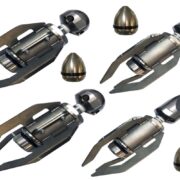The ADA (American with Disability Act) is a law passed in 1990 that incorporates specific requirements into constructing ADA-compliant public bathrooms. These guidelines require that public and commercial restrooms be modified to ensure convenience, proper access, and accommodation to individuals with physical disabilities. The ADA compliance standards apply to all public areas, various services, and building entrances.
The critical aspects of ADA guidelines are measurements and spacing and staying up to date with access policies. It’s also important to note that urinals, toilets, sinks, and tubs have different guidelines which you must comply with. That means you must understand what the Americans with Disability Act has provided. Here is a list of five requirements for a bathroom to be ADA compliant.
Table of Contents
Sink and Faucet Requirements
Using glass shower enclosures is perfect, but the sink shouldn’t be placed too high. Instead, it should be appropriately sized; the ADA sink guidelines require sinks connected at 34 inches high. There should be enough knee space to accommodate a wheelchair. Additionally, there must be proper plumbing and insulation under the countertop and sink to allow for the occupant’s unrestricted movement. You should also ensure that knobs and faucets can be accessible with one hand. Plus, all installed electronically controlled, pushable, and lever-operated devices make navigation easier.
Grab Bars
Grab bars must have a smooth surface, reachable, and easy to grab. You can install these handrails on any partition closet or wall. According to the ADA guidelines, the ideal diameter for circular grab bars ranges between 11/4 and 11/2 inches. The non-circular bars must have a maximum of 2 inches and a perimeter of about 4 to 4.8 inches. You can also surround the bathtub wall with rails to enable the users to hold on to it and support themselves. ADA compliant grab bars should be installed at 33 – 37 inches above the floor with a separation distance of 11/2 inches between the wall surface and the grab bar.
Hand Driers
ADA-compliant bathrooms should have touch-free or motion-activated hand driers. These devices must incorporate push buttons and be operable with one hand. Moreover, hand dries must not exceed 5 pounds of pressure to operate and must not extend more than 4 inches out of the wall. Ultimately, all sensors and buttons should not be connected over 48 inches above the floor.
Toilet Stall
ADA requirements for toilet stalls or compartments are at a maximum of 70 inches from the finished floor. They must provide enough space for motion aid devices in front of the toilet and to its sides. It must also include horizontal grab bars behind the toilet at 36 inches and across the nearest partition or wall of around 42 inches. Similarly, the water closet should be installed between 17 and 19 inches above the floor. However, the measurements can be different for children.
The flush valve requirements vary depending on various aspects and have different measurements for children and adults. On the other hand, the gripping area must be approximately 1.25 inches and be installed to 1.4 inches from the toilet wall. It should also be able to withstand a minimum weight of 250 pounds.
Rotating Space
An ADA-compliant bathroom must allow for free rotation of a wheelchair at any given time and provide an appropriate floor space of a minimum of 60 inches to allow for an uninterrupted 180-degree rotation. To meet the minimum space requirement, you can supplement the available space with any open spaces under a sink or fixture. Other additional aspects include incorporating bathroom objects that are flatter, longer, wider, and easy to push or grasp. You should also enhance lighting and offer proper support systems.













Comments